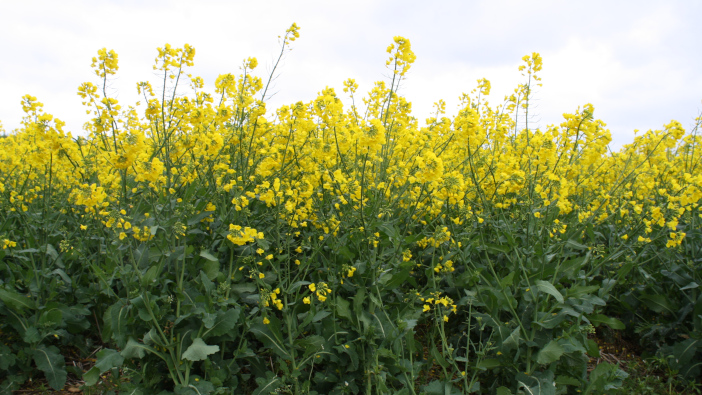David Bouch, national seed manager at Hutchinsons, believes that the current market conditions and the choice of varieties are causing many to consider including oilseed rape in the rotation this autumn.
The first consideration is the end market, which Mr Bouch explained is as firm in price as many will ever recall but which is volatile. Even without the transformation following the unfortunate circumstances in Ukraine, the market was likely to be bullish as the UK is a net importer until the area planted returns to the highs of the last decade.
Additionally, even with nitrogen prices as high as they are, the gross margin for the crop, if established well, can reach 3.5 tonnes per hectare given present market values. There has also been a reduction in cabbage stem flea beetle pressure in some parts of the country, partly brought on by the reduction in area planted in the last two autumns.
He said that there would almost certainly be an increase in the area planted this autumn and planting when the conditions are right will be key to the success of these crops. This could be as early as late July, or as late as the middle or end of September.

Choosing the right variety
According to Mr Bouch, hybrids would be the preferred option when choosing varieties. They possess traits that the conventional currently do not. Aurelia and LG Aviron are two key hybrids, offering turnip yellows virus resistance, pod shatter resistance, RLM 7 phoma resistance and, in the case of LG Aviron, the best light leaf spot resistance currently available.
Aurelia is suited to early drilling and LG Aviron, with its autumn and spring vigour, is well suited to drilling on the third week of August and beyond. He adds PT303 to the options, with sclerotia resistance.
If conventional is the preferred option as home saved seed is a requirement, then Mr Bouch recommends the two most widely grown varieties in the UK, KWS Campus and Acacia. Campus is said to have remarkable consistency and has now been successfully grown for 8 years with reliability. Acacia has shown its abilities in the last two years and is also a sound option. TuYV resistance in the conventional market can be found in Annika.
Should Clearfield factor in your calculations, then Matrix CL looks to offer the best package available at this moment. Finally, there are the Clubroot resistant variety options which should only be grown where Clubroot is an issue and not because they now offer less of a drop-off in yield.
Croozer and Chrome have a track record in this sector, whilst newcomer LG Scorpion offers TuYV resistance and exceptional autumn vigour to aid establishment. Clubroot could conceivably be a more widespread threat this season, as earlier drilling offers more risk. Clubroot can appear from nowhere and infection is a threat in moist soils where temperatures are in the range of 16 – 25°C. PH levels below 7.5 add to this risk.
In summary, the correct establishment is key. This means drilling into the right soil conditions at the correct time, with the best varieties. The 10 varieties listed above offer a competent solution for all sectors.


